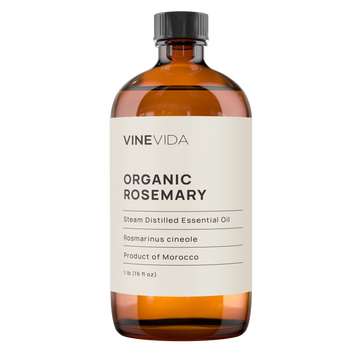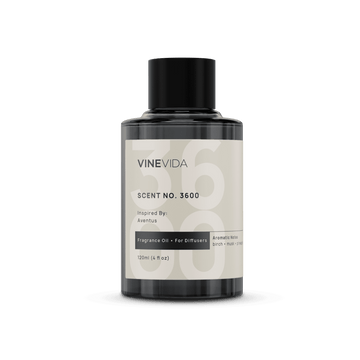Do you know, the funny thing is that only very few researchers have asked, “What is vanilla essential oil good for?” Typically, we’d be able to bring you tons of scientific data on which part of the body it affects and why, but there have been very few trials.
However, it’s a fragrance that speaks to the deepest parts of our psyche about comfort, security, and relaxation. Smell it, and some of the best memories of baking cookies begin to emerge, and with it, our bodies remember that these are safe places where we are surrounded by love.
For this reason, Vanilla essential oil is excellent for helping people who are struggling with the effects of trauma or simply for making home feel even more delicious than it usually does.
What is Vanilla Essential Oil Good For?
- Relaxing
- Soothing
- Reassuring
- Tempting and Seducing
- Aphrodisiac
Just To Be Clear: What is Vanilla Essential Oil?
In the spirit of Vanilla and our company being all about trust, let’s be transparent and say that we don’t sell Vanilla essential oil. No one does. It’s a misnomer. There is no such thing as a vanilla essential oil because it is not distilled and is therefore not an essential oil.
We sell Vanilla oleoresin, which is absolute because it has been extracted using a solvent, but to all intents and purposes, they are the same thing. Just to be on the safe side, though, so you know what you are buying because that feeling of being reassured is very vanilla.
If you want to know more about that, including our favorite tale about a little boy and his stick, look at our Vanilla Oleoresin product listing. Throughout this article, though, for ease, we’ll refer to it as a vanilla essential oil.
The Effects of Vanilla Essential Oil On Mood
It’s only very recently that we have started to understand how our sense of smell works, and vanilla is a lovely opportunity to visualize it.
Imagine walking into a bakery and inhaling a rich deep vanilla aroma. We will notice how the windows are steamed and might think of our grandmother’s baking in their kitchens. You can see the pattern on her apron and her hair. What’s the décor around her?
I imagine the faded primrose lemon paint on my nan’s pantry behind her. My grandad’s Liquor ice Comfits in their paper bag, the R White’s lemonade, and the Rose’s Lime Cordial. Through the door, I can see colossal dahlia’s in their vases on the sideboard, the record player with rock and roll 45s and Ken Dodd’s “Diddy Men” record for me to play for the nine hundredth time. Out of sight is the china cabinet, packed to the brim with nick-nacks and a bottle of Advocaat for the Snowball Cocktails for us to drink at Christmas. Out of the window, I can see the washing line stretching across the lawn down to the vegetable garden.
Then someone else opens the door to the bakery, the doorbell rings, and the trance is gone immediately, and the magic is snatched away from me.
All that was conjured by inhaling molecules that found their way to the hippocampus, which recollected all those details.
Understanding The Effects of Inhalation of Vanilla
It is generally agreed that smelling essential oils' effects are executed through three pathways.
- HPA Axis
- GABA Receptors
- TRPV Channels
The first is the stress pathway, known as the HPA axis. The Hypothalamus, Pituitary, and Adrenals fire a cascade of hormones designed to react to stressful situations. This is part of a system called the Sympathetic Nervous System.
Research shows that many essential oils trigger responses in the Parasympathetic Nervous System, the component responsible for our capabilities to rest and restore. The oils do this partly through their effects on the body’s calming neurotransmitter GABA.
When we smell something, its molecules are taken into the nasal cavity and absorbed into the mucosa, where about ten million receptors are designed to sort and categorize the smells.
Harmful smells such as smoke are taken to the amygdala, for example, to set off a warning cascade that you might be close to a fire.
Each of these receptors in the mucosa is known to express neurotransmitters. So, when we inhale lavender, for example, the body MAKEs calming chemical messengers sent to the brain.
When we inhale citrus smells, the outcome is the body is more focused on physical activity. Likewise, scientists have shown that the scent of vanilla encourages more introverted emotions, making us more reflective, thoughtful, and intellectual. So, more than anything, when we ask: “What is vanilla essential oil good for?” there probably isn’t any better answer than snuggling down with a good book.
Vanilla Essential Oil: The Still, Small Voice of Calm
Incredibly, we now know that babies begin to learn to smell in the womb and can recognize the fragrance of their mother’s amniotic fluid compared to other women three weeks after birth.
Researchers used vanilla essential oil in a ward of neonates to see its effects on bradycardia and apnea. Bradycardia in infants slows their breath, so they stop breathing for twenty seconds or so (apnea). They found that vanilla reduced the babies' bradycardia and apnea.
While data are not available for adults, it seems likely that the effects will be the same to enable people to sleep more calmly and peacefully.
The babies were also studied to see how the vanilla essential oil affected them when they had heel prick tests and other injections or blood tests. In both premature and full-term human infants, the vanilla significantly soothed the babies' expressions of distress. It modified their crying time and discomfort without affecting heart rate and blood oxygen saturation. (Neshat, 2016), (Goubet, 2007), (Rattaz, 2005), (Arzi, 2020)
Teddy Bear Therapy
Just a note on balance here because we could all be tempted to run out and grab the nearest bottle of vanilla to get our babies off to sleep and to stop them crying, and actually, this might be a sensible thing to do. However, we would urge you to read the post Is lavender essential oil safe for babies, which discusses essential oils for little ones generally, to stop you from falling into some aromatic traps. Babies navigate their world by their sense of smell. So be careful not to block out your fragrance with the vanilla.
That said, a drop of vanilla on the top of the teddy’s head for the first day at nursery or when staying over with a friend is a great way to calm anxious little ones down.
Trauma
Hopefully, by now, you are starting to see an overview of what Vanilla essential oil is good for. Soothing, calming, reassuring. Vanilla is a go-to essential oil for aromatherapists treating any kind of trauma that has left a physical imprint.
It’s worth considering some statistics surrounding PTSD to see how far-reaching that might be.
So, PTSD affects around 3.5% of the US adult population annually, and one in eleven people will be affected by PTSD at some point in their lifetime. Suffering from PTSD increases your chances of both depression and heart disease, but also pain too. For example, one study found that 50% of firefighters who had PTSD also suffered from some kind of pain condition, as opposed to 20% of firefighters who did not have PTSD.
The reasons for that are both precise and arcane. For example, we might consider how someone afraid will permanently be tense and then hyper-sensitize their muscles.
Interestingly, vanilla was shown to have both an anti-startle effect in adults (Miltner, 1994) and an anti-depressant. (Singletary, 2020)
Understanding Vanilla Essential Oil’s Role In Pain Management
For some people, pain is their very existence. Even a featherlike touch on their skin can feel like they have been viciously attacked. This hypersensitized effect of pain is known as allodynia. Many body processes contribute to allodynia, but one, in particular, is a fault in the signaling of the TRPV channels. Transient Receptor Protein Vanilloids.
The TRPV channels are mainly connected with temperature. They are located on free nerve endings and tell the brain about the impending danger of harmful substances. For example, vanillin is known to specifically act upon TRPV1, a heat receptor, which is why we feel warm and cozy when we smell it.
Nerves come in all shapes and sizes but also different thicknesses, based on how insulated they are by a substance called myelin. (Myelin is damaged in people with Multiple Sclerosis, and it is this that affects their nerve signaling and thus their mobility.)
Differences in thicknesses mean different speeds of signaling to the brain.
Nerve Signaling and Pain
Imagine you burn your hand in the oven and snatch your hand away faster than you have time to realize; ouch, that’s hot. That’s the different nerve speeds in action; afterward, the C Fiber nerves continue to send a throbbing signal to remind you to be careful of the burn. C Fibers have the least myelin insulations, so their retort takes a long time to reach the brain. Nevertheless, they transmit dull throbbing aches, and these C Fibers often will not switch off in people with unexplained pain syndromes.
All of these nerves go directly from the tips of our fingers up to our brains. They do not. There are several that all link together to our brains. At each junction, there is a synapse where neurotransmitters need to send information from one nerve to another.
These people with ongoing pain often have a deficiency of either GABA or enkephalins (endorphins found in the brainstem and spinal cord) at the synapse. When there is inadequate GABA at the synapse, the journey the communication takes changes, and rather than the message going to a part of the brain that says “Danger,” the message is received by a different part of the brain that says pain.
In rodent models, vanillin provides an anti-nociceptive action (Hiroshi Ueno, 2019), which switches down their response to pain. On paper, at least, we expect the same to apply to human medicine and pain.
Sexual Dysfunction
A study published in the 2010 edition of obstetrics and gynecology about their findings from 713 women who had been referred to a gynecology clinic for Chronic Pelvic Pain. It revealed that over 48% had a history of sexual trauma or abuse.
Massage or inhalation of vanilla essential oil may help their condition by assisting them to feel safer and relax a little more.
Incidentally, it is known that over 67% of the success when treating women for gynecological effects comes from a placebo. So simply listening to them without judgment and then offering them vanilla essential oil compassionately may well be able to bring about miraculous change.
What is Vanilla Essential Oil NOT Good For?
Diffusers!
Who wouldn’t want that lovely, homely feeling wrapped around you like a warm blanket? So, there is a temptation to put it in your diffuser, but that would be a bad plan. Because it is an oleoresin, it is thick and gunky, so your diffuser will have to work too hard to lift and diffuse the molecules. Over the years, we’ll bet many devices have been wrecked by putting these heavy oils into them. So, if you are going to add it into a blend, make sure there are plenty of much thinner oils (top notes like lemon or cinnamon, for example) to thin its consistency.
Perhaps use it in candles, which lend themselves well to its lovely creamy fragrance.
Vanilla Essential Oil Blend Recipe
As stated above, if you are looking for the VINEVIDA Vanilla essential oil, look under the “Absolutes” tab, which is correctly filed under Absolutes. However, for ease, we’ll still refer to it as an essential oil here.
Soothing Body Lotion
- 100ml (4fl oz) Aqueous Cream (Available from the pharmacy)
- 1 drop Vanilla Essential Oil (Vanilla Planifolia)
- 1 drop Geranium Essential Oil (Pelargonium Asperum Va Roseum)
- 1 drop Palmarosa Essential Oil (Cymbopogum Martini)
Safety: Not suitable for use in the first 16 weeks of pregnancy
Calming Bath Oil
- 1 tbsp Rosehip Carrier Oil (Rosa Canina)
- 1 drop Sweet Orange Essential Oil (Citrus Sinensis)
- 1 drop Cardamom Essential Oil (Elettaria Cardamom)
- 1 drop Vanilla Essential Oil (Vanilla Planifolia)
Method of use: Pour into a warm bath and agitate well to break out the oils. Take care when getting out of the bath because oils make it very slippery. Also, ensure you rinse the tub well to protect the next person stepping into it.
Safety: Not suitable for use during the first 16 weeks of pregnancy.
Aphrodisiac Massage Oil
- 1 tbsp Jojoba Carrier Oil (Simmondsia Chinensis)
- 1 drop Sweet Orange Essential Oil (Citrus Sinensis)
- 1 drop Cedarwood Virginian (Juniperus Virginiana)
- 1 drop Vanilla Essential Oil (Vanilla Planifolia)
Safety: Not suitable for use during the first 16 weeks of pregnancy. Be aware that essential oil concoctions can compromise the integrity of condoms.
Conclusion
What is Vanilla Essential Oil Good for? For weaving aromatic smells of seduction, temptation, harmony, and trust. Incidentally, its heavy fragrance also lends itself well to act as a fixative for fragrances, helping them last a little longer.
References
- The effect of a familiar scent on the behavioral and physiological pain responses in neonates
- Effects of Breast Milk and Vanilla Odors on Premature Neonate's Heart Rate and Blood Oxygen Saturation During and After Venipuncture
- Goubet N, Strasbaugh K, Chesney J. Familiarity breeds content? Soothing effect of a familiar odor on full-term newborns. Dev Behav Pediatr. 2007;28:189–194.
- Goubet N, Rattaz C, Pierrat V, Bullinger A, Lequien P. Olfactory experience mediates response to pain in preterm newborns. Dev Psychobiol. 2003;42:171–180.
- Rattaz C, Goubet N, Bullinger A. The calming effect of a familiar odor on full-term newborns. Dev Behav Pediatr. 2005;26:86–92.
- The Influence of Odorants on Respiratory Patterns in Sleep
- Emotional qualities of odors and their influence on the startle reflex in humans
- Vanilla: Potential Health Benefits
- Comprehensive behavioral study of the effects of vanillin inhalation in mice
















